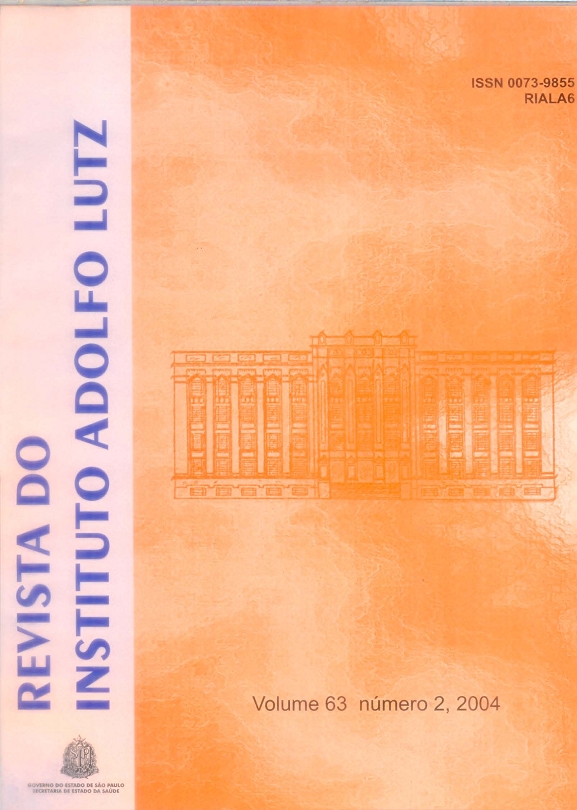Abstract
Polygonum persicaria L. (Polygonaceae) is a plant largely used for treatment of various diseases in
Brazilian popular medicine, such as anti-hemorrhoid, vermicide, and in gastric affections. Macroscopic
and microscopic analyses of Polygonum persicaria L. leaves and stem were carried out. The presented
pictures illustrate their descriptions. The plant extract chromatographic profile was established by means
of thin layer chromatography comparing with standards substances. All these data might be used as
parameters for performing the quality control of the whole crude or fragmented drug which provide the
drugs adulteration detection. Analytical procedure employed in the present study provides the simplest
and quickest method to assess the quality of the crude drug.
References
1. Almeida Alves, T.M. et al. Polygodial, the fungitoxic component from the Brazilian medicinal plant Polygonum punctatum. Mem. Inst. Oswaldo Cruz, 96(6): 831-3, 2001.
2. Anderson, D.C., Siqueira-Batista, R., Quintas, L.E.M. 1998. Plantas Medicinais- do cultivo à terapêutica- 2º edição, Editora Vozes, Petrópolis. apud: Lorenzi, H.; Matos, F.J.A. Plantas Medicinais no Brasil: nativas e exóticas cultivadas. São Paulo: Instituto Plantarum, 2002. p.388-9.
3. Bagchi, D. et al. Benefits of resveratrol in women’s health. Drugs Exp. Clin. Res., 27(5-6): 233-48, 2001.
4. Barroso, G.M. Sistemática de Angiospermas do Brasil. Rio de Janeiro: Livros Técnicos e Científicos, l978. v.1, p.114-5.
5. Berlyn, G.P.; Miksche, J.P.; Botanical microtechnique and cytochemistry. Ames: Iowa State University Press, 1976. 326p.
6. Gattuso, S.J. Structure and ultrastructure of the secretory glands in the genus, Polygonum (L.), section Persicaria (Polygonaceae). Biocell, 25(3): 229-33, 2001.
7. Grenand, P., Moretti, C., Jacquemin, H. 1987. Pharmacopées Traditionnelles en Guyane: Créoles, Palikur, Wayãpi. Editorial 1-ORSTROM. Coll, Mem Nº. 108. Paris, France. apud: Lorenzi, H.; Matos, F.J.A. Plantas Medicinais no Brasil: nativas e exóticas cultivadas. São Paulo: Instituto Plantarum, 2002. p.388-9.
8. Harborne, J.B. Phytochemical methods: a guide to modern techniques of plant analysis. 2ed. New York: Chapman and Hall, 1984. p.75.
9. Hoehne, F.C. Plantas e substâncias vegetais tóxicas e medicinais. São Paulo: Departamento de Botânica do Estado, 1939. p.109.
10. Isobe, T.; Noda, Y.A. Chemotaxonomy study of flavonoids from japanese Polygonum species. Yakugaku Zasshi, 107(12): 1001-04, 1987.
11. Johansen, D.A. Plant microtechnique. New York: Mc Graw-Hill, 1940. 523p.
12. Kapoor, S.l.; Sharna, P.C.; Kapoor, L.D. Epidermal and venation studies in the Indian species of Polygonum Linn (Polygonaceae)-I. Bull. Bot. Surv. India, 13(3-4): 244-59, 1971.
13. Kawasaki, M.; Kanomata, T.; Yoshitama, K. Flavonoids in the leaves of twenty-eight polygonaceous plant. Bot. Mag., 99: 63-74, 1986.
14. Kismann, K.G.; Groth, D. Plantas infestantes e nocivas. São Paulo: BASF, 1991. v.3, p.311.
15. Kraus, J E; Arduin, M. Manual Básico de Métodos em Morfologia vegetal. Rio de Janeiro: Edur, 1997. 198p.
16. Latruffe, N. et al. Molecular analysis on the chemopreventive properties of resveratrol, a plant polyphenol microcomponent. Int. J. Mol. Med., 10(6): 755-60, 2002.
17. Lerstern, N.R.; Curts, J.D. Foliar anatomy of Polygonum (Polygonaceae): survey of epidermal and selected internal strutures. Pl. Syst. Evol., 182: 71-106, 1992.
18. Lorenzi, H. Plantas daninhas do Brasil. 2º ed. Nova Ordessa: Plantarum, 1991. 444p.
19. Lorenzi, H.; Matos, F.J.A. Plantas medicinais no Brasil: nativas e exóticas cultivadas. São Paulo: Instituto Plantarum, 2002. p.388-9.
20. Mitchell, R.S. Comparative leaf structure of aquatic Polygonum species. Amer. J. Bot., 58(4): 342-60, 1971.
21. Oliveira, F.; Akisue, G.; Akisue, M.K. Farmacognosia. São Paulo: Atheneu, 1998. p.35-8,
22. Panizza, S. Plantas que curam: cheiro de mato. São Paulo: IBRASA, 1998. 279p.
23. Peng, Z.F. et al. Antioxidant flavonoids from leaves of Polygonum hydropiper L. Phytochemistry, 62(2): 219-28, 2003.
24. Pio-Correa, M. Dicionário das plantas úteis do Brasil e das exóticas cultivadas. Rio de Janeiro: Ministério da Agricultura, 1969. v.4, p.51-3.
25. Rizzini, C.T. Sistematização terminológica da folha. Rodriguesia, 23(24): 193-212, 1960/61
26. Sass, J.E. Botanical microtechnique. 2 ed. Ames: Iowa State College Press, 1951. p.228.
27. Scavone O., Graeiro A., Contribuição ao estudo anatômico e fitoquímico do Polygonum persicaria L. var. biforme (Wahlenberg) Fries, Polygonaceae. Rev. Farm. Bioquim. Univ. S. Paulo, 8: 69-89, 1970.
28. Silva-Brambilla, M.G.; Mosqueta, I.S. Anatomia foliar de Polygonaceae (Angiospermae) da planície de inundação do alto rio Paraná. Acta Scientiarum, 23(2): 571-85, 2001.
29. Smolarz, H.D. Chromatographical analysis of phenolic acids in some species of Polygonum L. genus. Part 2. Quantitative determination of the major components by high performance liquid chromatography (HPLC). Acta Soc. Bot. Pol., 69(1): 21-3, 2000.
30. Trease, G.E., Evans, W.C. Pharmacognosy. London: WB Saunders, 1996. 612p.
31. Yano, H. Estudo Farmacognóstico e Farmacológico de Polygonum persicaria L. São Paulo, 1999. [Dissertação de Mestrado - Faculdade de Ciências Farmacêuticas, Universidade de São Paulo].

This work is licensed under a Creative Commons Attribution 4.0 International License.
Copyright (c) 2004 Revista do Instituto Adolfo Lutz
